New solutions to complex problems
Global Innovation Summit – World-leading research meets cutting-edge technology
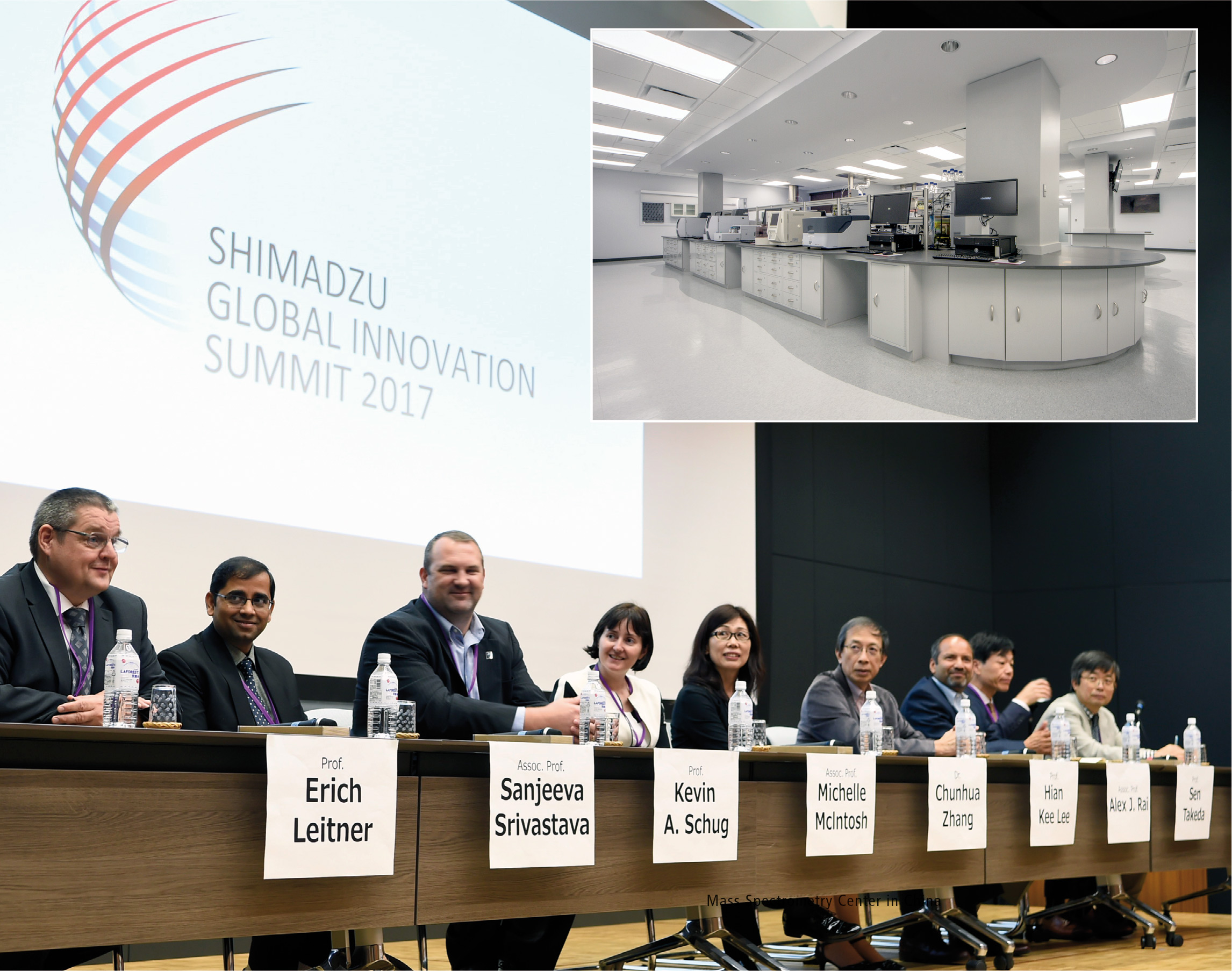
Working with scientists and academia to explore new grounds for providing advanced technological systems has been a long and good tradition within Shimadzu to become a worldwide-leading manufacturer of analytical instrumentation and medical technology. Many industry-firsts have today turned into standards and norms of a well-equipped laboratory and underline Shimadzu’s approach of “Excellence in Science.”
To maintain itself as a global leader and expand its technology, Shimadzu has placed an increasing emphasis on strengthening its current academic partnerships and establishing new ones.
The establishment of Shimadzu Innovation Centers combining scientific and technological know-how in order to use Shimadzu’s expertise to provide even more customer-focused service is the next step towards these partnerships. Meanwhile, there are Innovation Centers in the United States, China, and Singapore. In 2017, the European Innovation Center was opened in Duisburg, Germany. It applies a decentralized structure to be close to scientists and related markets, and is a strong statement by Shimadzu about its commitment to working with academic institutes. The result is faster response times for the development of technologies that meet its partners’ needs.
“We have many good scientists and engineers. However, it is not easy to develop solutions, so we must collaborate with more researchers. Only then can we continue to offer outstanding technologies, products, and services,” said Shuzo Maruyama, general manager of the Analytical and Measuring Instruments Division at Shimadzu Corporation.
Shimadzu has invested tens of millions of dollars into projects with universities around the world. Examples include the Shimadzu Center for Advanced Analytical Chemistry (SCAAC) at the University of Texas at Arlington (United States), the Shimadzu Analytical Innovation Research Laboratory at Osaka University (Japan), and the HMSTrust Analytical Laboratory at Monash University (Australia). Through Shimadzu instruments, these open-access, non-profit laboratories provide not only advanced research, but also high-level training to students and future scientists at the beginning of their careers.
Initiatives like these are the reason why nearly 40 % of Shimadzu’s 11,000 employees and nearly 50 % of its customers are located overseas.
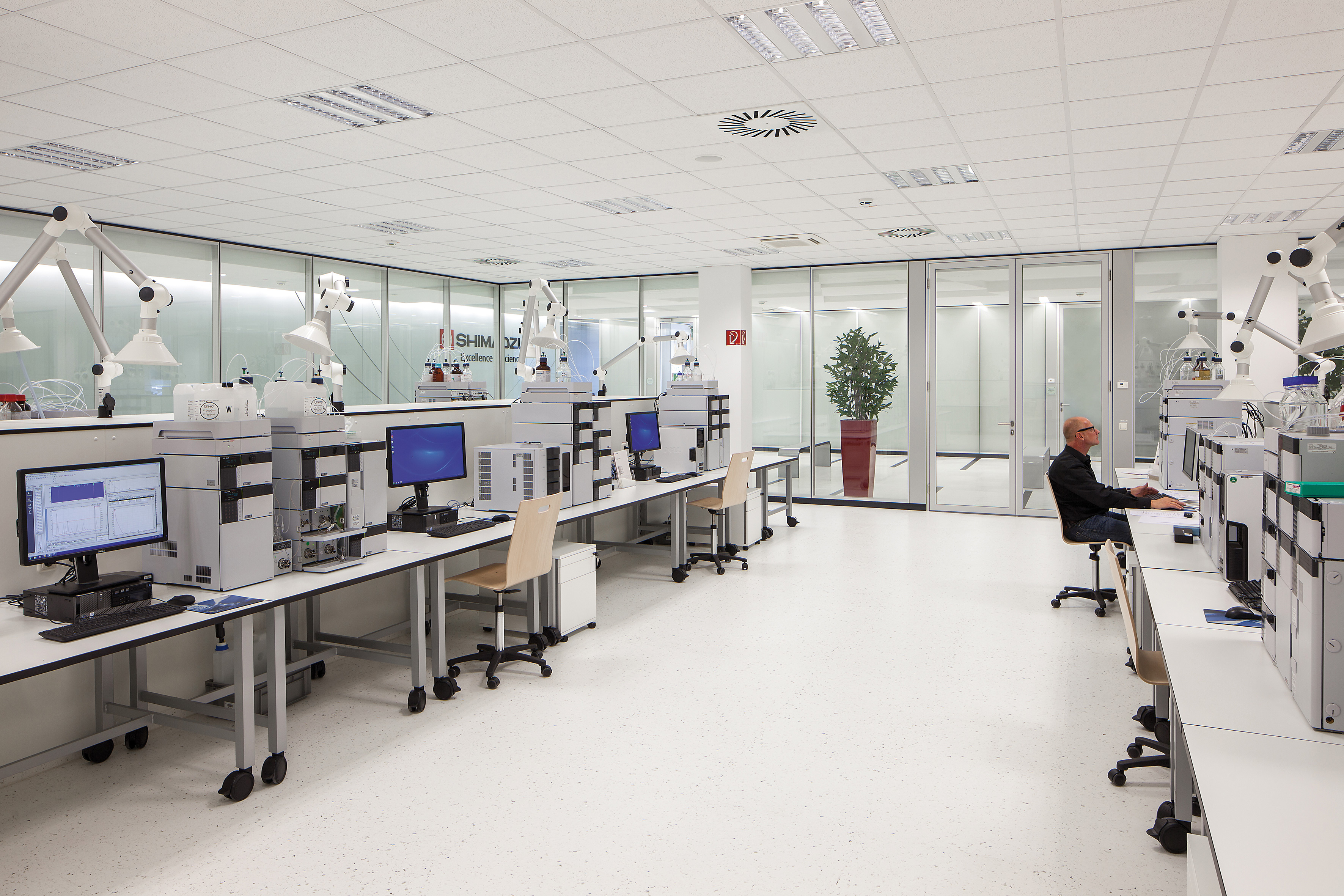 Innovation Center in Laboratory World Europe, Duisburg, Germany
Innovation Center in Laboratory World Europe, Duisburg, Germany
Global Innovation Summit on human health, food safety, and environmental conservation
Apart from this new generation of collaboration with scientists, the Shimadzu Global Innovation Summit was born, a conference-style multilateral engagement between key opinion leaders (KOL), Shimadzu scientists, engineers, and executives, and many emerging thought leaders (ETL). In July 2017, the Summit brought 11 KOLs to the Shimadzu global headquarters in Kyoto to speak about their research in medical innovation, environmental issues, and food evaluation, for example.
The Summit’s aim was to facilitate collaborations among scientists using similar techniques but rarely having the opportunity to interact with one another. The research themes presented focused on global issues of human health, food safety, and environmental conservation, and highlighted the importance of analytical technologies for solving these problems.
Most representatives attending the Summit came from universities or national research institutes. The Summit was deliberately kept small, with just over 100 participants, but was internationally diverse, as scientists from 16 different countries participated. The reason for the small size was to encourage as much interaction as possible between the attendees. Following the academic model, along with KOL presentations, ETL were welcomed to present their data at a poster session, and several open-panel discussions were held to facilitate interaction between ETL and KOL.
“The conferences I attend are mostly on pharmaceuticals and rarely about food science. The talk I heard at the Summit about extractables and leachables in food packaging described the same issues we encounter with pharmaceutical products and packaging. I exchanged business cards after the talk to discuss potential collaborations,” said Monash University Associate Professor Michelle McIntosh from Melbourne, Australia.
Hope for new mothers: new treatment of postpartum hemorrhage
Dr. McIntosh’s talk is a perfect example of how Shimadzu hopes to see its technology bring solutions to some of the world’s crises.
Each year, 100,000 women will die from postpartum hemorrhage, most of them in developing countries. The gold standard for preventing and treating postpartum hemorrhage is oxytocin, a drug that costs only a few cents. Despite this cost, access to oxytocin is not extensive. The reason is the drug’s storage and delivery. Because it is a peptide, oxytocin must be stored under controlled temperatures and must be injected, which requires qualified medical staff. However, in poorer nations, it has been estimated that nearly 90 % of mothers in the lowest income brackets give birth at home and do not have access to pristine oxytocin or adequately trained professionals.
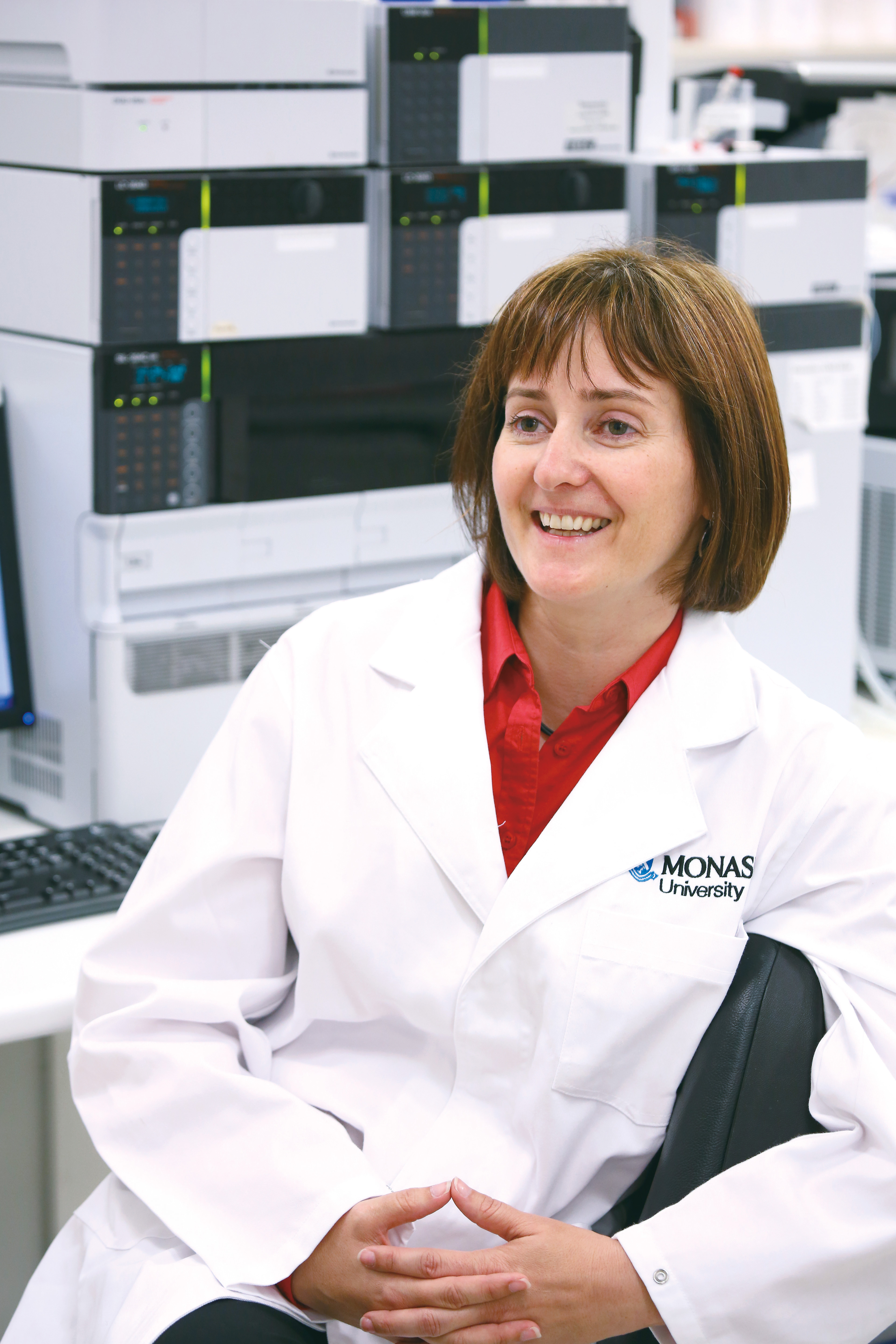 Dr. McIntosh in her lab at the Monash Institute of Pharmaceutical Sciences
Dr. McIntosh in her lab at the Monash Institute of Pharmaceutical Sciences
As an alternative, Dr. McIntosh has been researching aerosolized versions of oxytocin. Although systemic drug delivery via the lungs has remained a challenge, drug absorption and onset of action can be equivalent to injections. She therefore investigates a dry powder version of oxytocin, which removes the need for refrigerated storage and simplifies the administration of the drug. A major piece of this work is understanding the degradation of oxytocin, for which Dr. McIntosh uses a number of Shimadzu instruments. These studies include understanding how the liquid and solid versions of oxytocin respond to the high temperatures common in the regions most in need of the aerosolized form. Through this research, she and her team now conduct Phase 2 clinical trials.
New anti-cancer therapy known as near-infrared photoimmunotherapy (NIR-PIT)
Another KOL who spoke was Dr. Hisataka Kobayashi, Senior Investigator at the Center for Cancer Research, National Institute of Health in the United States, within easy reach of where the first Shimadzu Innovation Center was established. There, Dr. Kobayashi has been developing a new anti-cancer therapy known as near-infrared photoimmunotherapy (NIR-PIT). NIR-PIT uses conjugates of fluorescent dyes and antibodies to attack the cancer cells. These conjugates are injected into the patient and will bind to the surface of the cancer cell. A NIR stimulus causes a reaction in the dye to activate the antibody. This activation permeabilizes the cell membrane and triggers necrosis. NIR-PIT achieves extraordinarily high specificity for cancer cells. It is scheduled for Phase 2 clinical trials and soon will proceed to the registration trial.
Shimadzu analytical equipment supports Dr. Kobayashi in this research by providing data on the photosynthetic reaction that releases the antibody. The antibody must transition from a hydrophilic to hydrophobic environment to cause the necrosis. Shimadzu mass spectrometry equipment is being used to understand the chemical mechanism of the reaction in order to optimize the light intensity that maximizes the cytotoxic effect.
The latest Shimadzu NIR technology was also presented at the Summit. In this system, indocyanine green (ICG) is injected into the patient. NIR light is shone onto the patient to fluoresce ICG, illuminating blood perfusion and lymph vessels in real time for the doctor conducting the surgical procedure under ambient light. This technology is currently used at Japanese hospitals in an experimental setting on patients.
New diagnostics for prostate cancer
KOL Dr. Alex J. Rai, associate professor at the Columbia University College of Physicians and Surgeons (United States), sees these and other talks as a big boost to his research on new diagnostics for prostate cancer.
One major challenge in cancer relates to the heterogeneity of the disease process, which demands analytical tools that can reveal biomarkers for molecular stratification. These biomarkers can be used to assist in diagnosis, prediction of therapeutic response, and for monitoring purposes. From what doctors currently know, there is no single gene that is responsible for the majority of prostate cancers. Thus, it is of great interest to identify biomarker signatures that can provide insight into the disease process, to understand how genetic mutations are translated into dysfunctional proteins that result in aberrant signaling in tumor cells.
Prostate cancer is the second leading cause of cancer death. Dr. Rai is searching the constituents of exosomes for biomarkers that can stratify patients for better diagnosis and treatment plans. This research has not only benefited from Shimadzu technology but also from Shimadzu education programs like ‘lab4you’, which invites graduate students and other scientists to Shimadzu facilities and provides quick access to equipment for experiments.
Environmental conservation: potential impact of hydraulic fracking
Also, key opinion leaders studying environmental issues and having long relationships with Shimadzu University Laboratories presented their research. One was Shimadzu Distinguished Professor of Analytical Chemistry Kevin A. Schug of the University of Texas at Arlington. His lab researches the potential impact of hydraulic fracturing, or fracking, on the environment in the State of Texas. The SCAAC has allowed the Schug lab to conduct some of the largest studies on groundwater contamination, providing invaluable information for policies that will establish best practices for this increasingly common energy extraction method.
While his own talk was technical and focused on advances in the analysis of intact proteins, Dr. Inês C. Santos, an ETL in the Schug lab, presented an award-winning poster about changes in the microbiome in groundwater wells near fracking sites.
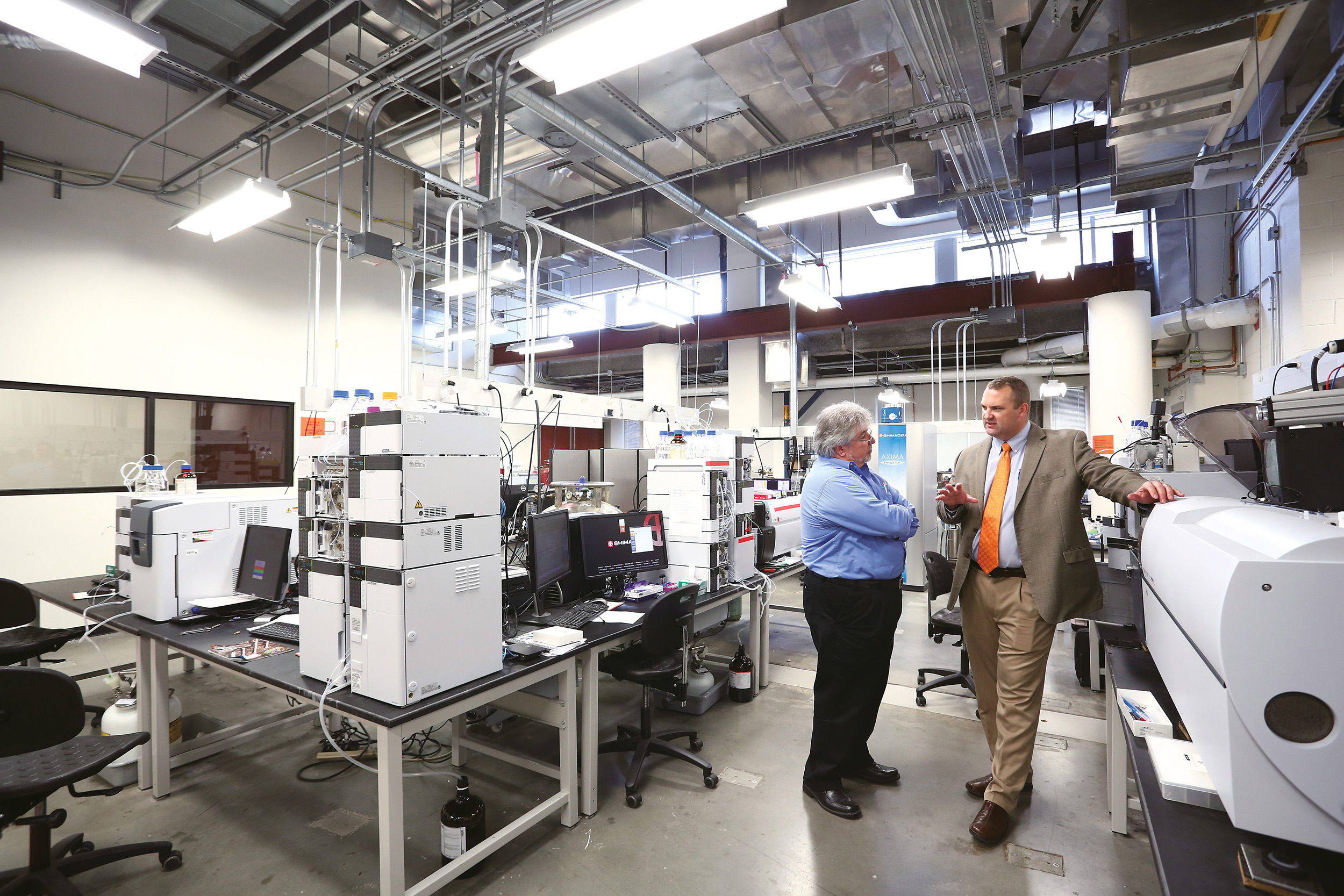 Dr. Schug (right) at the University of Texas at Arlington
Dr. Schug (right) at the University of Texas at Arlington
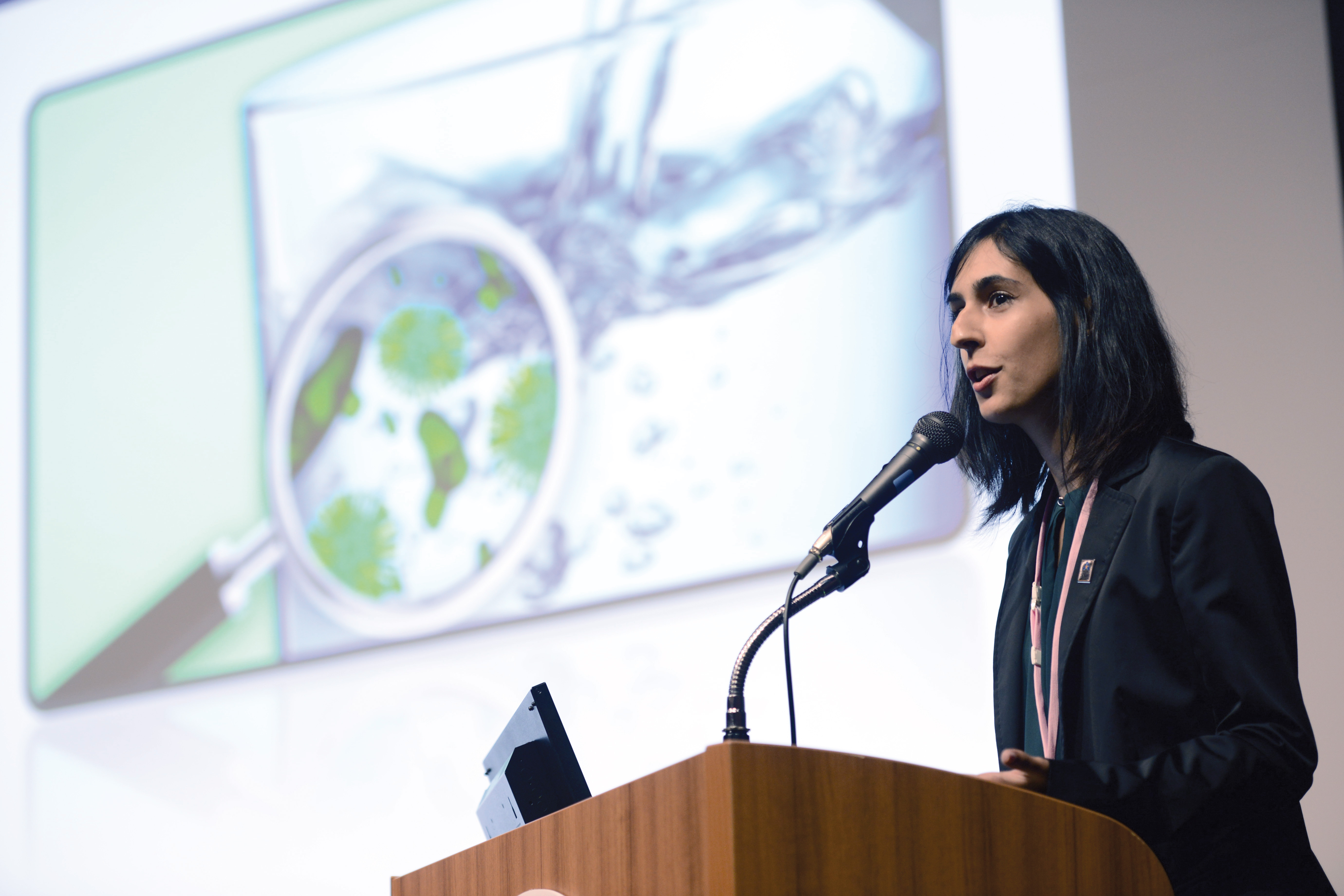 Dr. Santos during her presentation at the Global Innovation Summit
Dr. Santos during her presentation at the Global Innovation Summit
Evaluation of complicated food function
Professor Eiichiro Fukusaki of Osaka University also gave a technical talk, which was about metabolic fingerprinting and its application to food evaluation.
“It is very difficult to evaluate food function using conventional reductionism. The metabolomics technique is very useful to evaluate complicated food function, particularly flavor,” he explained.
By creating a metabolic matrix using mass spectroscopy data, Dr. Fukusaki showed that metabolic fingerprinting can predict the scoring of various attributes, such as aroma, flavor, and appearance of different foods by expert taste testers. These fingerprints can be used by companies to modify flavors for different markets.
The future
The Global Innovation Summit is the latest example of Shimadzu’s recognition that to continue to innovate groundbreaking technologies, it must work closely with scientific leaders in analytical research of different fields. The Summit was a natural growth from the relationships the company had forged through its many laboratories and centers around the world. These facilities have allowed Shimadzu scientists and engineers to work closely with KOL, establishing a level of trust that could not be attained otherwise.
“Shimadzu is starting to communicate much more, especially in my field,” said Prof. Erich Leitner, a professor at Graz University of Technology (Austria) and a KOL at the Summit, who spoke about his research on food aroma and food contamination. “It makes a difference. They give us great opportunity for measurements. It’s really nice to go there. Nice to work there. They really try to speed up things.”
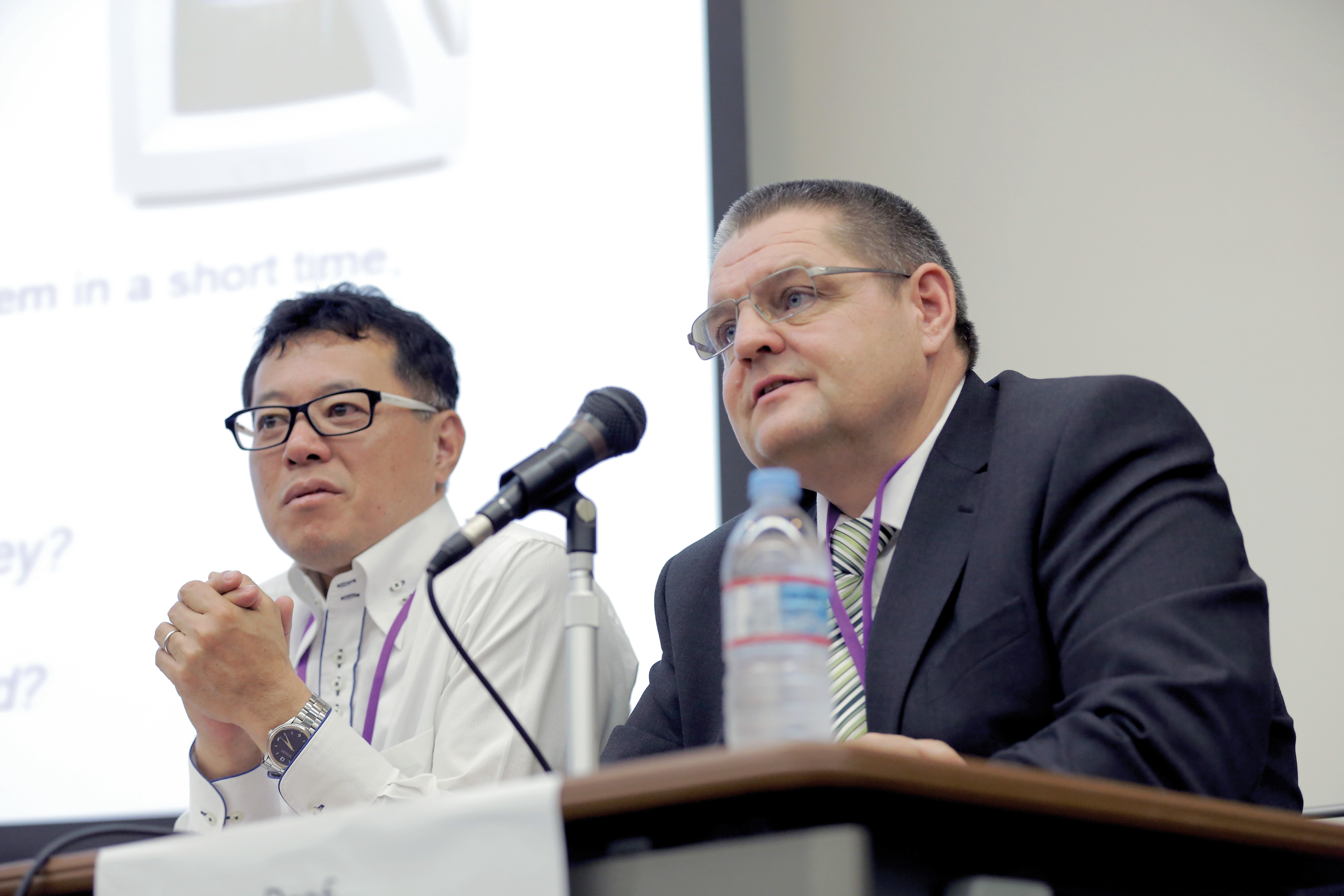 Prof. Erich Leitner (right), University of Technology, Graz, Austria
Prof. Erich Leitner (right), University of Technology, Graz, Austria
Further information on this article
Shimadzu Global Innovation Summit 2017